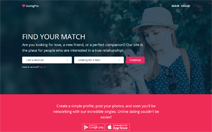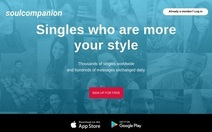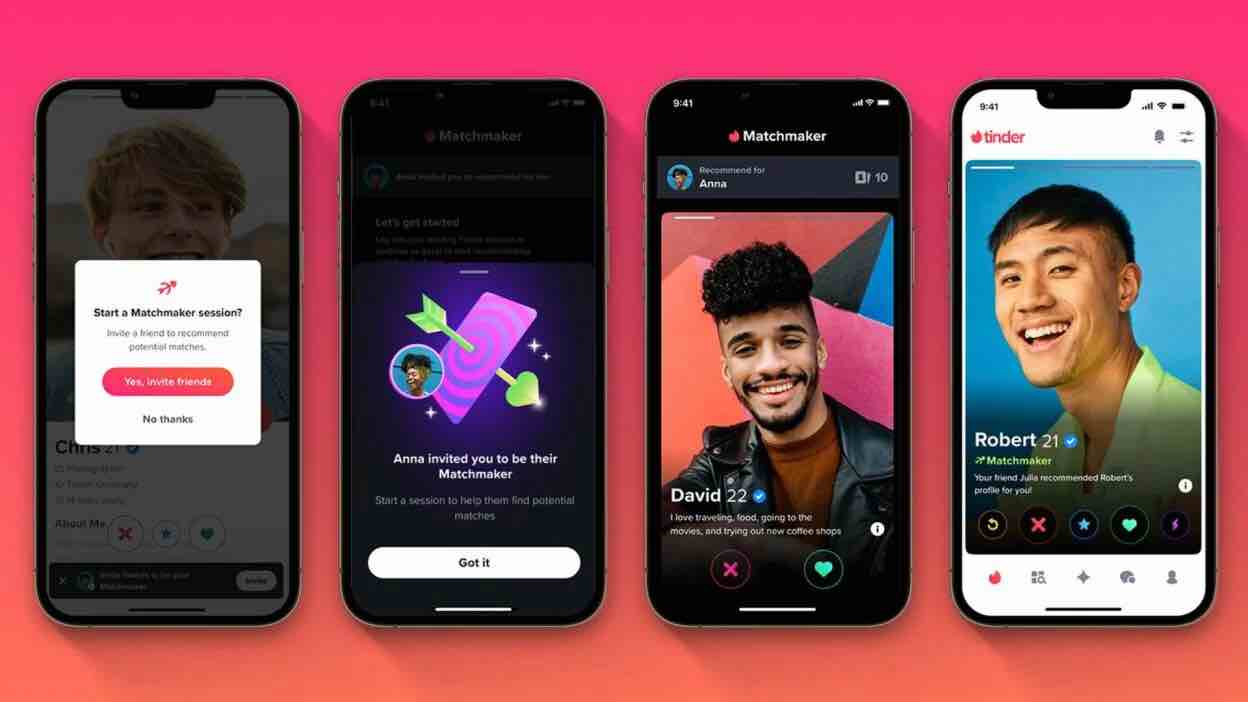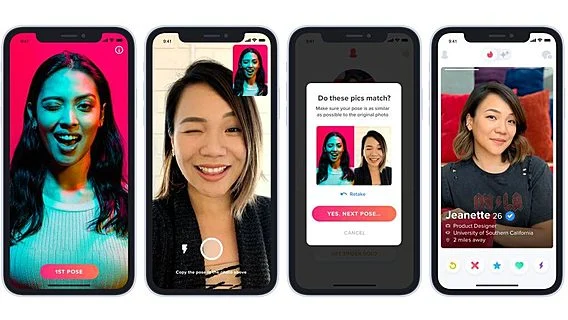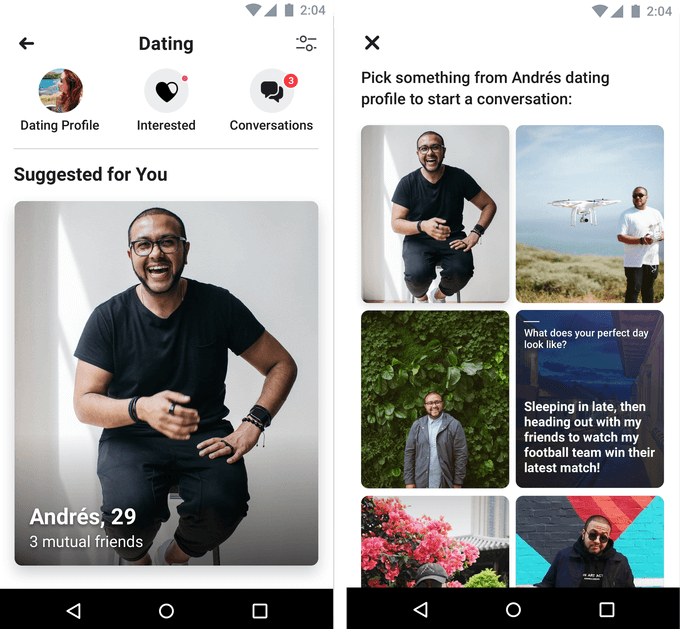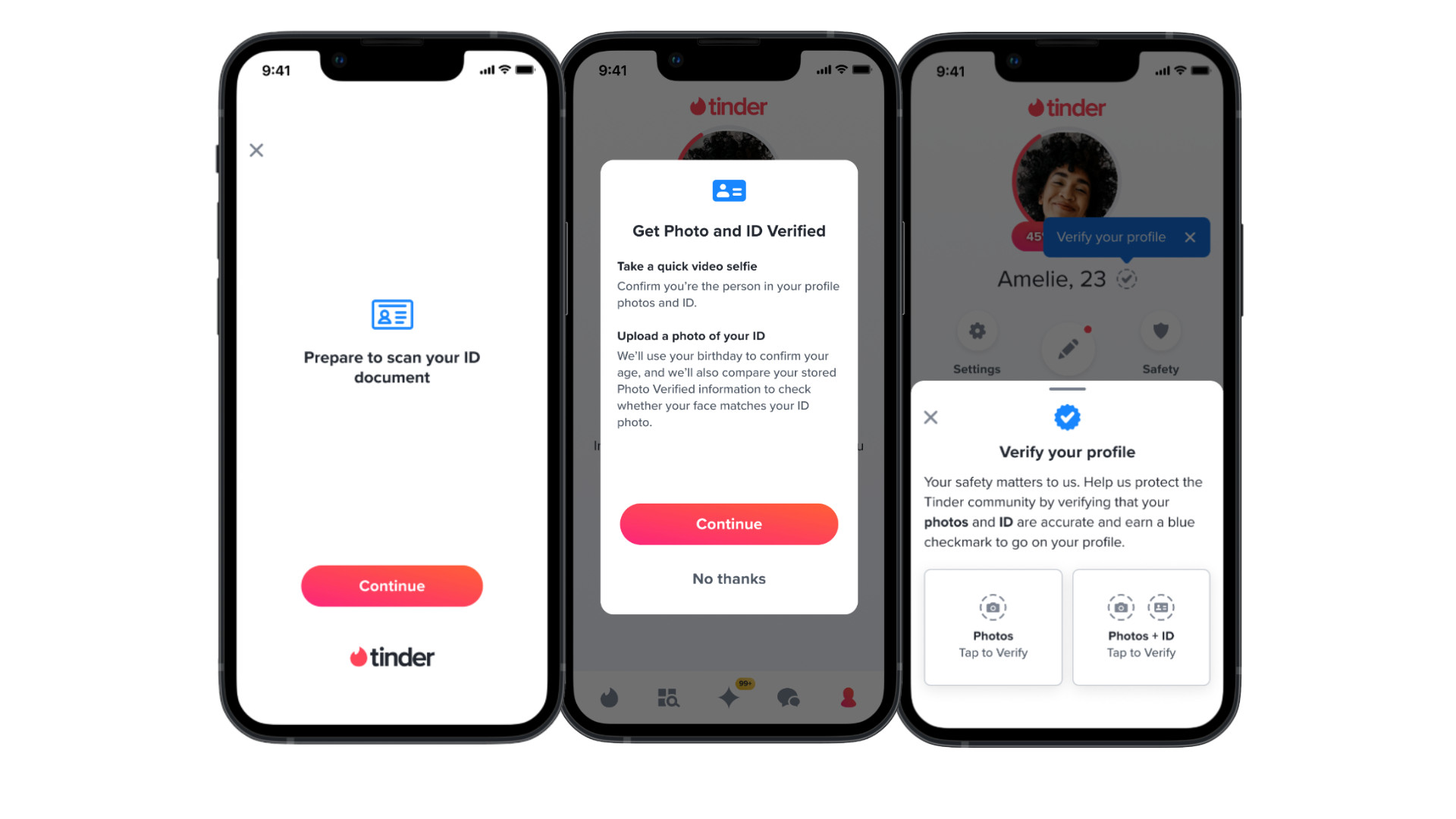The ultimate guide to your Tinder clone. How to сreate a сustom dating app.
So, you’re interested in creating a dating app?
Among all existing platforms, Tinder stands as an excellent example to emulate, inspiring many entrepreneurs to create a Tinder clone dating app that is both similar and unique.
The reason for such great interest is the size of the target audience: 57 million users daily spend over 1.5 hours in the app. It definitely attracts users and offers potential revenue sources if effective and successful matches are made.
Indeed, dating apps are in demand these days, and many include them as a regular expense in personal budgets. So, how can your app stand out among existing ones and become the next Tinder clone?
Before discussing the development of a mobile dating app, let’s look at:
Some interesting statistical data
– 19% of internet users currently use online dating sites or apps.
– 84% of dating app users stated they use online dating services for romantic relationships. Another 43% used online dating for friendship, and only 24% of respondents said they used online dating apps and services exclusively for sexual contacts.
– 24% of people use dating sites for dating, 43% for finding friends, and 84% for establishing relationships.
– The global online dating market in social networks is estimated at 100 billion USD. 4 billion USD is the size of the online dating market alone.
– There are over 8000 dating sites worldwide; in the United States alone, there are 2500 dating sites, and more than 1000 new dating sites are launched each year. (Forbes)
– 64% of surveyed individuals stated that having common interests is more important than appearance in online dating.
– People who met their spouse online reported more satisfaction in their marriage than those who met their spouse offline.
– 65% of online dating users prefer video dates as a compatibility check for potential partners.
– Couples who met on eHarmony have a very low divorce rate – 3.86%.
– 12% of American online dating network users found reliable relationships or marriages.
Location can impact the overall number of users of your app.
Considering New York, where 50% of the population is single, you can attract a large number of potential users. But if you compared this with a region where 70% of the population is married, your target audience size would significantly decrease.
So, for all regions where you plan to launch your dating app, conduct thorough research and ensure the market is good in all these areas.
Before you start creating your own dating app, or a related one at the intersection of dating and another area, understand the target group.
Defining and understanding your target audience is a crucial stage that significantly affects the success of your app.
While you should focus on groups more likely to use the app, avoid completely excluding groups that do not meet your established criteria.
Generally, your target audience can be classified based on demographics or psychometrics. Demographic factors include gender, age, location, income, occupation, race, ethnicity, and marital status.
Psychometrics is more complex and involves traits you expect to be inherent in typical app users.
Use these to create detailed profiles of your target audience.
Answers to the following questions may help you:
1. What jobs do clients hire your product for?
2. What primary needs and desires of our target audience does our product satisfy?
3. What unique characteristics of demographics and psychometrics make our audience ideal for our product?
4. In which areas of life are our potential users most actively seeking solutions that our app can offer?
5. How have they solved this task before? Which your product will solve.
6. What obstacles or limitations might influence potential users’ decision to use our app?
7. What alternative solutions or products does our target audience already use, and how can we offer a more effective solution?
These questions will help you better understand the motivations, preferences, and behavior of your target audience, which in turn will improve the development and marketing of your product.
In addition to app design and development, marketing is equally important. Your campaigns should effectively communicate information to all potential users. By focusing on a niche audience, you gain a competitive advantage and can easily build a strategy that attracts a loyal audience. Most LGBT adults report that they have used a dating site or app, so offering dating services that include trans and queer communities is one idea.
You can take another step and unite people who even share the same dislikes: an example is Hater, a dating app that offers users the chance to meet someone ‘hating the same thing,’ and determines matches based on what they dislike.
Time to analyze the competition
What can you do to stand out among competitors? Everything around is gradually changing, and it’s possible to outpace competitors. Before you truly get an answer, you should carefully study existing applications at both ends of the spectrum. Consider popular applications in the niche that interests you. How do they solve customers’ problems? What features do they have in common and what are their unique advantages? Review the reviews of both the most and least popular dating apps and note the features that satisfy users. Moreover, identify common problems or features that the target audience disliked. This is evident in their feedback, for example, in Google Play ratings. Now, review the list and start identifying those that you must include or exclude from your dating app. Also, evaluate both local and global competition, regardless of the size or popularity of the dating application.
It’s expected that your dating app will create almost perfect matches. There’s no real science on how to do this, and you can use various algorithms for this purpose. Here’s what we suggest. The average user considers appearance and interests as the two most important factors when searching for a suitable match. 64% of dating service users claim they look for someone with shared interests. 49% of users stated they also value appearance in their search for a partner.
Also, keep in mind that before you actually start matching partners, you will have to collect all the necessary data from users using a quick and easy questionnaire. In this process, you can develop a dating algorithm that is important to your segment. Tinder matches people based on location, Dine uses users’ favorite restaurants, and Hinge matches people based on mutual friends. But instead of using all these factors, find out how your audience previously selected their partners and what new technologies have appeared in any industry to borrow from them. Ultimately, your dating app should not just be another alternative to Tinder.
There are 4 suitable algorithms for developing a dating app:
Location Similarity
Many dating apps use GPS as a basis for pairing partners. They generate a list of nearby users and set distance search limits, then provide users with basic facts about candidates before deciding what to do next and starting communication.
Based on Calculations
In this scenario, algorithms are based on calculating compatibility percentages from matching answers given by an app bot. Skipping a question can also lead to a match if both the user and potential candidate skipped it ‘together’.
Preference Pattern Matching
Algorithms that identify patterns in preferences and behavior are based on data collected from connected social network profiles and the analysis of likes, comments, and preferred groups.
AI-Based Methods
For enhancing user experience and providing high-precision partner matching, dating apps use machine learning based on parameters that affect your clients’ outcomes.
Discussing your plans for creating your own Tinder clone
Your target audience will have diverse needs, but two of the most common are task resolution speed and cost.
Speed through user experience: Your app should offer a first-class interface, allowing users to understand everything at a glance. Along with a visually appealing design, your app should enable users to perform tasks quickly and clearly. User flows and workflows should be simple and brief. Each action should be executed in the fewest possible steps.
Other Factors
Your app should help users find safe partners, avoiding connections with creepy or dangerous individuals. Features for this include:
1. Profile verification: Request phone numbers and social network profile links from users. Less anonymity means they are less likely to pose a threat.
2. Message filtering: Messages should be filtered, either automatically or manually, to prevent users from threatening others.
3. Ban: Allow users to report and take action against unacceptable and indecent behavior.
4. Blacklist: Enable users to avoid unwanted encounters.
Of course, you should also take measures to protect your users’ personal data.
What are the key features to include in a dating app?
Any successful dating app comes with a set of essential features. Typically, your users should be able to log into your app using any of their social network accounts, such as facebook. As a next step, your users will provide information about themselves, such as age, location, gender, interests, and so on.
Provide options like ‘like’, ‘dislike’, and even ‘superlike’. your users should be able to send each other emojis, photos, and other content through the built-in chat system. you can also offer a rewards system and give points to users when they invite friends, leave a review, or perform any other actions. other features you might include are:
Log in through other social platforms
The best way to attract users from the start is to offer a feature for quick login with registration via facebook or any other social network profile.
Profile management
If profile sections are easily manageable, users typically feel more engaged and provide more information. additionally, it’s important for profiles to be editable and easy to navigate.
Search settings
This allows users to choose potential candidates. users can customize viewing certain matches based on various filters.
Geotagging
The location-based matchmaking model pioneered by tinder has been copied by most dating apps due to its convenience and popularity among users. People united by a similar location are usually more willing to approach each other.
Voice chat
To make communication more diverse, users need tools to organize their chats using text messages and voice.
Social network posts
Users can link their social network profiles with dating apps, providing more opportunities for instant content sharing with potential candidates.
Swiping
Swiping can significantly enhance user interaction. That’s why ‘like or not’, done with a single motion, is integrated into many dating apps. Moreover, it’s the fastest and most convenient way to search for potential partners.
What else?
We have already discussed the interface, the algorithm of selection, and security. Here are a few more tips to keep in mind.
Meeting People
You can also offer your users advanced features so that they feel responsible for the whole process. Allow them to choose potential partners based on location, interests, field of activity, preferences, and other factors.
Message Exchange
Allow users to communicate with each other confidentially through message exchange. You can also set some rules about who will send the first message or time limits for starting a conversation to increase engagement. For example, Bumble allows only women to start a conversation, while JSwipe sets a time limit.
1. Additionally, the messenger should be built-in, with a simple and attractive design. Remember that this is one of the most essential parts of your application that affects user interaction, so keep the following tips in mind.
2. Your users should be able to quickly view information about the person they are communicating with. And if you can do it faster, it would be even better.
3. Implement features that enhance the basic capabilities of text message exchange. For example, you could offer built-in tools to start a conversation, GIFs, or even stickers.
How to create a dating app
Marketing Plan
Your app will be able to expand its user base only when you continue to effectively promote it in the market. Divide your target audience into segments.
Minimal Value Product
Start with a minimal cost-ready version, adding the minimally necessary features for cost-effective testing.
Choose a technical partner – developers of the Dating App with experience
In fact, when you choose a team of developers for a dating app, you are making a choice in favor of the future success of your idea. Therefore, it is necessary to deal with professionals with extensive work experience and expertise. Since then, you have more chances to test your project faster. After all, the most expensive thing we have is the time of our life.”
Where is the money?
Excellent, so everything is largely set up, but there is still one serious problem. How to monetize the app and generate income? How to make a profit? Dating apps may be harder to monetize than other apps, but you can still earn quite impressively using the following means. In-app purchases. Offer in-app purchases. But this works only when the items are attractive enough. For example, you can allow users to buy a keychain that instantly notifies people who are interested in them. Advertising can help you generate revenue, but make sure it doesn’t annoy your users. Gifts are an additional feature that can be offered for a fixed fee: this implies that users can send virtual flowers, kisses, congratulations, admiration or gratitude.
Free access.
One of the most attractive ways to attract new users is to offer free access to the basic functions of the application. This may include the ability to view profiles, send a limited number of messages, or receive match recommendations. Providing free access not only helps grow your user base, but also builds trust in your app, encouraging users to upgrade to paid subscriptions for additional features.
Premium access.
One of the most common ways to monetize an app, premium access means that the user can access additional features. Offer several plans, categorizing them as basic, valuable, Gold, or similar categories.
Local partnerships.
You can sign an agreement with any local business and promote it through the app. For example, you could promote a hotel, restaurant, or flower shop through your app. This method only works in regions where there are several local users.
How much does it cost to create a dating app?
Development costs for a dating app vary from approximately $35,000 to $100,000 depending on the number of features you want to offer. And then you’ll also have to invest money in marketing, so plan your advertising budget.
Find out the cost of your project for free. Send a description of your ideas.
Final thoughts
Regular paid subscription for many people to dating apps have already become a reality. Due to their solving of many tasks in our time.
This creates a huge number of business opportunities for entrepreneurs. To achieve success in creating a user dating app, save your time and effort by using professional advice from a developer company with relevant experience, such as Dating Pro, which provides consultations and full custom development services for projects of any complexity.
How to create a dating app?
Development of a mobile dating app requires the following steps:
1. Understand the target audience
2. Research the market and analyze the competition. The longer a competitor exists, the more burdened it is with legacy and less agile.
3. Determine the set of necessary features that solve customer tasks.
4. Creating prototypes and frameworks
5. UX / user interface design
6. Choose the most suitable dating platform and technology stack for your own user dating app
7. Create and launch MVP
8. Promote, develop, and scale your dating app startup
9. The right choice of software development company is a key factor in the project’s success.
What features should be included in a dating app?
The basic MVP includes the following features:
• Sign in
• Profile management
• Search settings
• Geolocation
• Voice chat
• Messaging
• Social media posts
• Notifications
Don’t know where to start? Our specialist will help you! Contact us.

